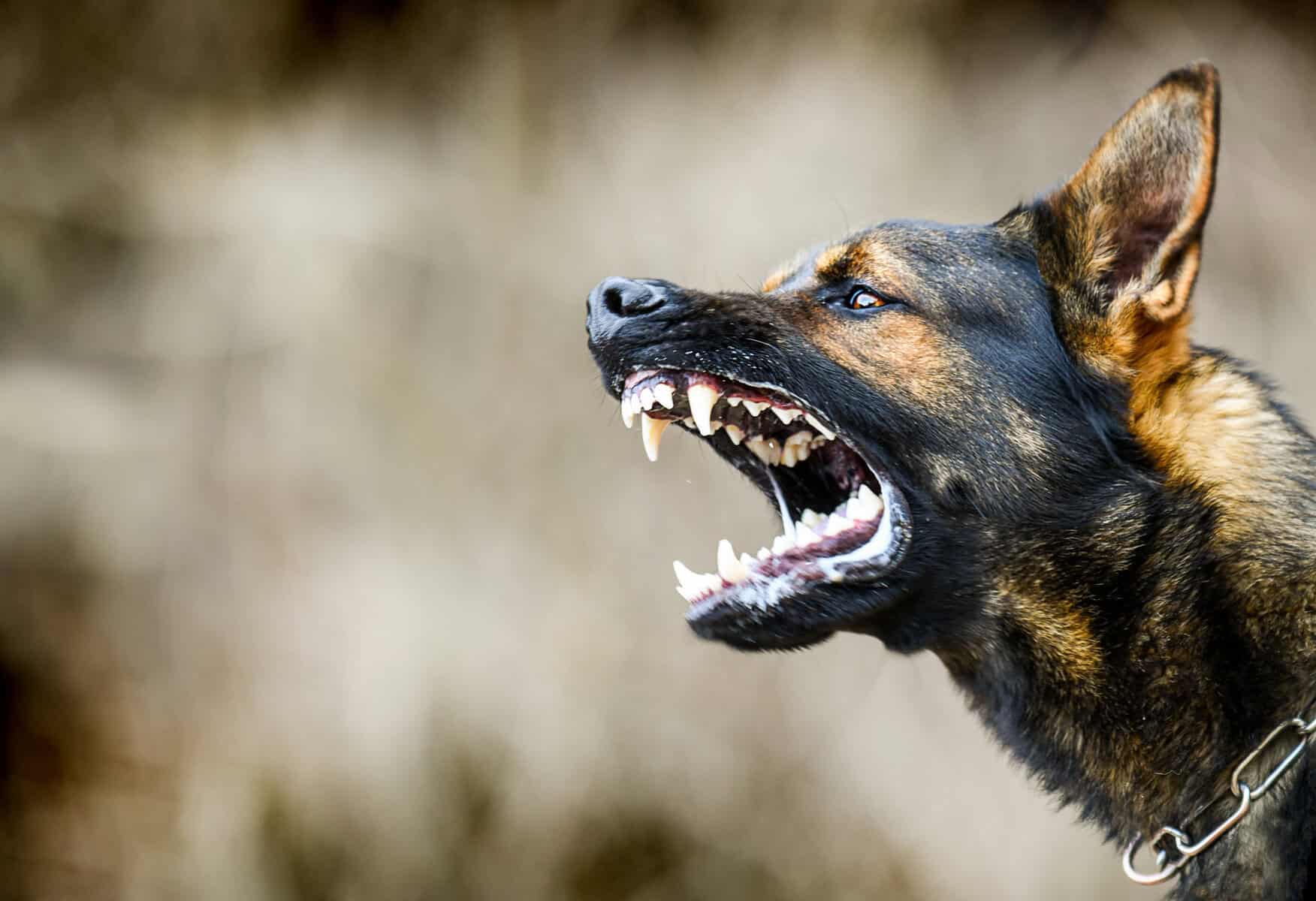Any bite or wound, scratch, or even a lick containing saliva with the rabies virus within it can transmit the disease.

Emily Brontë self-cauterised a bite wound from a rabid dog with a red-hot iron, down to the bone.
That’s not only as badass as it gets – which is entirely on-brand for the author of Wuthering Heights – but it demonstrates the absolute horror of contracting rabies prevalent at that time, and the terror it induced in its potential victims.
As the original zombie virus, rabies infestations infect the brain and produce behavioural changes including hyper-irritability, extreme reactions to stimuli such as light and noise, uninhibited rage, aggression and violence – including biting – as well as foaming at the mouth due to hypersalivation, combined with the fact that swallowing becomes impossible because of taut, paralysed throat muscles.
Straitjackets proved vital in restraining victims before strong sedatives and contemporaneous reports were that up to six men were needed to hold down victims in the final stages of infection.
Louis Pasteur not only brought us pasteurisation of milk, but also the first rabies vaccine.
His assistants would draw up the saliva of dead rabid dogs in long glass straws and the fear of rabies was such that a loaded gun was at hand to shoot anyone who unfortunately drew the saliva into their mouth.
To this day, rabies is only preventable, not curable – the number of those who have survived it is vanishingly few – and none have lived without extreme medical intervention or survived without some physical and mental consequence.
As a zoonotic disease, humans can contract it from many other mammals.
Although the vast majority of transmissions are via dog bites, there are known instances of cats and even rabid cattle infecting humans.
ALSO READ: Gauteng health offering free measles-rubella vaccines for children
Bites from Cape fur seals also need to be treated as this marine population has recently been infected by the virus, presumably by black-backed jackals along the Namibian coast.
Any bite or wound, scratch, or even a lick containing saliva with the rabies virus within it can transmit the disease.
The ongoing outbreaks of rabies in South Africa – and particularly along its warm eastern coast and nearby interior – is therefore of grave concern, particularly as rabies is a year-round issue in this country.
Despite the state vet underwriting rabies vaccinations for domestic pets, there is a reservoir, a permanent set of conditions that is maintaining rabies as a perennial pathogen and which is affecting domestic pets.
That’s why annual vaccinations are so critical to ensuring continued protection.
Rabies is a tiny, bullet-shaped RNA virus found in saliva and if it inoculates you via a wound, however small, it hides in the peripheral nerves making its way to the brain, from whence it manifests.
Immediately running cold water over any wound, literally irrigating it, for at least 10 to 14 minutes is a critically important preventative measure and in animal studies, that measure alone was in many instances sufficiently preventative.
If there is a rabies concern, don’t stop the blood flowing from wounds and sutures are generally not advised for such wounds as the act of stitching can help to spread the virus.
ALSO READ: Vaccine fear is hurting children
But don’t hesitate to seek medical help. Post-exposure prophylactic (PEP) measures are in force in South Africa, which includes the injection at the site of rabies immunoglobin, derived from the plasma of donors who are immunised against rabies.
This is injected into and around the site of the wound while a series of rabies vaccinations are undertaken far from the site of the wound, as the rabies antibodies within the immunoglobin cancel out the vaccine response.
South Africa exports rabies plasma throughout Africa and the strength of its programme is testament not only to the dedication of its unpaid donor volunteers, but also to the great and ongoing need for such literally life-saving measures.
During the incubation period, there is no test for rabies, as the virus hides in the peripheral nerves and hijacks the neuronal transport system to make its way into the brain, where it behaves like a neurotoxin.
Both the size of the wound or wounds and associated potential exposure, as well the site of the wound, in relation to the head, will inform medical personnel with regard to the management of PEP, as the incubation period ranges from a few days to as long as a year (with a tiny exposure on the small toe).
There is no test in animals for rabies apart from a brain biopsy, which requires both that the animal is euthanised, which may not be possible, and even if euthanised there will be a delay in test results.
While the risk from a bite or scratch from a fully vaccinated and up-to-date domestic pet may be extremely low, the risk is not zero as the rabies vaccine is 95% and not 100% effective.
When you are dealing with something that is almost 100% fatal once clinical symptoms develop and which cannot be tested for during incubation, can you afford to take the chance?
NOW READ: Animal shelters desperate for donations to stay afloat






